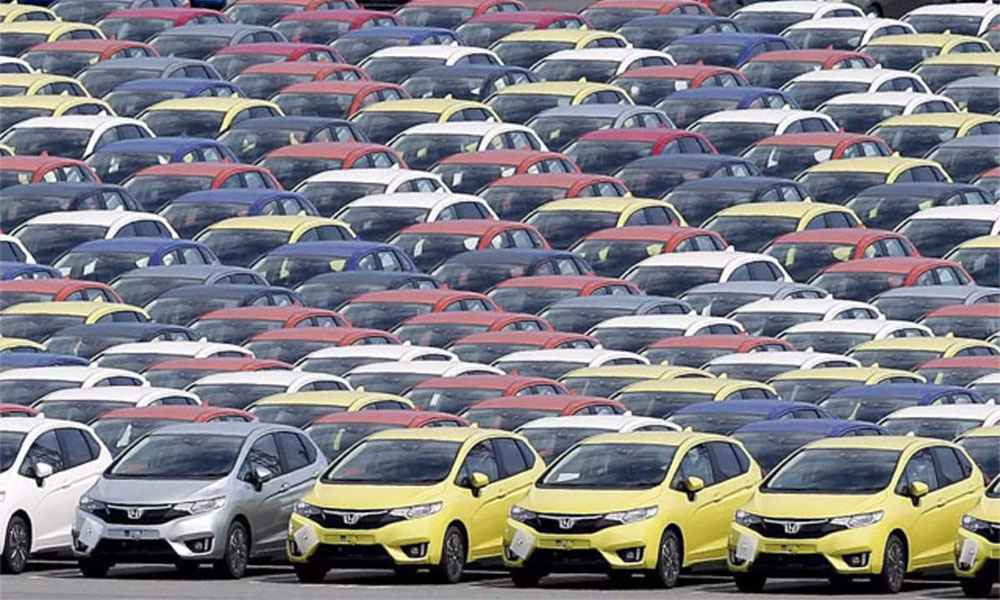Positive policy announcements are the need of the hour to help the sector deal with the disruption caused due to technological innovation and new business models.
The Economic Times India Leadership Council is the country’s most premium leadership platform comprising the country’s top CEOs and industrialists who will attempt to bring about desired change and drive and sustain growth at higher levels through policy prescriptions and advice.
Here, in this piece, the ET ILC’s top industry executives elaborate on policy measures needed to transform the surging auto industry’s fortunes and prepare it to meet and embrace disruptive challenges ahead.
As one of the major pillars of economic development and growth, with a huge bearing on GDP and employment generation, the Indian automobile industry, today, is on the cusp of a major disruption due to technological innovation, new business models and changing regulations.
Our industry is at the core of a huge transition and is looking forward to positive policy announcements and implementation that will set a good tone for the development agenda and contribute to a better economy.
HIGHER MONETARY ALLOCATION FOR RURAL ECONOMY
The focus of the government on rural development and farmer welfare would have positive rub-off effect on tractors, two-wheeler sector and entry-level passenger vehicle segment, which derives almost one-third of its demand from rural markets. The increased construction of rural roads would further catalyse the demand for two-wheelers and entry-level cars if rural affluence is promoted.
URBAN INFRASTRUCTURE AND CONGESTION
With increasing ownership of private cars, traffic management and congestion are posing as new challenges. To mitigate congestion in metro areas, both first and last mile connectivity needs to be improved. These would lead to creation of a seamless integrated mobility system. Government, OEMs, and suppliers should work together to incubate ideas in this area.
TAX REFORMS
Direct tax – Government should bring down the taxes — both income tax as well as corporate tax, to give boost to consumption, revive investment and enhance sector competitiveness. A corporate rate tax cut from the present 30% to 27-28% would help the industry.
Indirect tax – Simplify existing GST rate structure for the automobile sector. The rollout of GST from July 2017 has solved one of the perennial problems of the industry, which is multiplicity of tax rates that have a cascading impact on the costs of the vehicle. The government can explore in having a simplified GST structure with not more than two rates – a merit rate for small cars and two wheelers, and a standard rate for most of the other vehicle categories. Along with this, definition about various categories of vehicles (as per dimension and powertrain) should be clarified to avoid any ambiguity.
Bring fuel under GST: Ever since the rollout of GST, there have been talks about bringing petroleum products under the new tax net. In the present taxation structure, central excise duty and VAT constitute a significant amount to the final price of petroleum products.
The decision to bring fuel/petroleum products under GST would depend on a number of factors, such as: the rate of GST; whether the Centre is prepared for a further slippage in fiscal deficit; whether State governments would levy a local tax over and above GST etc. A long term solution, can thus be explored by comparing the pros and cons of inclusion of fuels under GST.
ROAD MAP & INCENTIVES FOR ALTERNATIVE POWERTRAINS
Electric vehicles: Transformation to electric cars is inevitable in India, which poses a great opportunity to the automotive industry. The government has to put in place a time frame and got the pre-requisite infrastructure ready to enable automobile OEMs prepare for the proposed switchover to electric vehicles. However, in the backdrop of the government taking a technology agnostic approach and avoiding framing an EV policy, OEM’s strategies need to be very flexible.
While it is imperative for the government to create conducive policy framework for adoption of EVs, it is equally important for the OEMs to collaborate with the suppliers to build the relevant ecosystem. Alternative powertrains: The government must recognise that electric vehicles are easier to make and are simpler than IC engines. But once it is sold to the customer, they need the charging infrastructure and reliability as consumers suffer from range anxiety. To overcome that, hybrid vehicles could be the best alternative.
There is no need for any investment in new infrastructure or no loss of revenue for automakers.
The government can thus reduce the taxes on hybrid vehicles from 43% to 28%. There is also a requirement to prepare a long-term policy framework for India to make a transition into hydrogen economy in the next 30 years.
Incentives for vehicle scrappage policy: Another key point that the industry is expecting to be addressed is the announcement of a vehicle scrappage policy – the proposed ‘Voluntary Vehicle Fleet Modernisation Plan’, which will keep older cars off the roads. An appropriately structured incentive scheme for scrappage of old cars, which invariably are more environment polluting, can be a game-changer for the industry.
However, this scrappage policy has to be defined clearly. Where not defined, the scrappage policy has to be strengthened and implemented.
Successful implementation of this policy will not only benefit the environment, but will also reduce fuel consumption and propel further demand for greener and efficient vehicles. Clear targets could be set for the mix of public sector and PPP investments envisaged in each sector.
Vehicle safety standards: With a diversified mix of different mobility solutions, including two-wheelers and auto rickshaws, the personal car fleet size is still very low at 20 per 1,000 people. Over the next 15 years, the Indian vehicle fleet is expected to double, posing an unprecedented road safety challenge. While few norms such as PV airbags and 2W ABS are mandatory from next year, there is still a long way for India to mandate active and passive safety systems in vehicles. Going beyond government regulations, public awareness of safer driving is key to democratise road safety all over the country.
Increased allocation for R&D or restoration of weighted deduction of 200% on R&D expenditure: With significant changes in emission and safety regulations, it is imperative for the industry to enhance their R&D expenditure.
In addition, the government is planning full electrification of existing vehicles. R&D spends on new cars, EV designs for cars, bio-fuels like ethanol and electric powertrain will increase. It is, therefore, imperative that the earlier weighted deduction of 200% on R&D expenditure that was brought down to 150% is restored.
Enhancing competitiveness of the Indian automotive manufacturing: The best way the government can contribute to enhance the competitiveness of the Indian automotive manufacturing is to provide good infrastructure that calls for a massive investment in logistics, warehousing, financial system for auto SMEs. Public investment in infrastructure must, therefore, be supplemented by public-private partnership (PPP), wherever possible. Cost of capital is critical for SMEs in auto sector. Efforts should be made by government to narrow the gap between cost of capital outside and cost of capital for SMEs within India.
Boosting exports: To drive exports, emphasis will need to be on increasing FTAs and investment in port infrastructure, with emphasis on creation of coastal economic zones covering multiple states, ports and special economic zones with a uniform policy.
Together with offering tax concessions, there should be a positive policy intervention to ensure optimised capacity utilisation, with focus on domestic and export markets.
Deloitte has supported The Economic Times India Leadership Council for this initiative on understanding the industry opinion of ILC members representing the auto sector.
**The views carried in the article are of ILC members in entirety, and not of Deloitte or ET.










